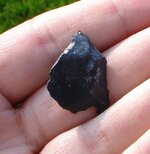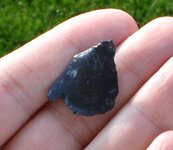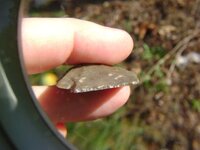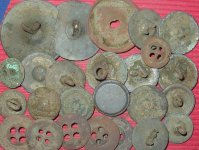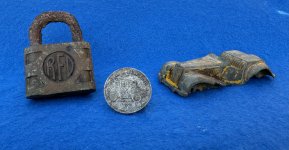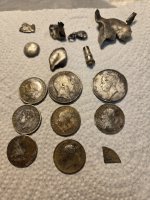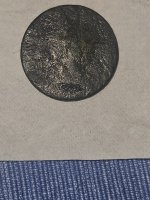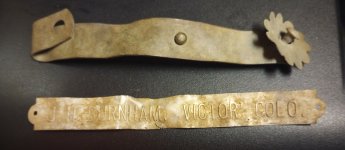uniface
Silver Member
When you get down to the root of it, the people who made the old tools approached what they did differently than we do. I just read a Tony Baker monograph that sums up this different mentality in a nutshell ( http://www.ele.net/containers/lithic_containers.htm ).
Modern knappers do not create and thin bifaces for the end products as the prehistoric people did. They do it to make arrowheads from the center of the biface . . . the prehistoric knapper was reducing the lithic container for the end products and not some single tool that resided deep inside.
In the old way of looking at it, there was a point "in there" if that's what they decided to make of the blank they were working. But, in the mean time, the blank itself was a knife, and every flake that came off had a potential use -- could be an end product in its own right, rather than superfluous material to be gotten rid of because it was in the way. Which is not to say that every flake was used, especially in an area where good material was abundant and easily gotten. But at the other end of the scale, their foresight and frugality were impressive. Far from a source of good chert and with a dwindling supply of it, nothing went to waste. You can see this in some Folsom assemblages. But the same was the case back east here, at times.
A favorite little tool I'll try to remember to illustrate tomorrow is of the finest quality, glossy dark blue Upper Mercer (Coshocton) I've ever seen. Unless I miss my guess, it's one of the final shaping flakes from out toward the tip of a Clovis point. It came from a Paleo site several hundred miles from the quarries, in northwestern Ohio along the Auglaize River, not far from (possibly, in) Michigan. This thin little arched flake, just a bit over an inch in length and three-quarters of an inch in width, is retouched along its entire periphery -- including the removal platform, which is worked into a graver tip. You need a magnifying glass to appreciate the delicacy of the workmanship. I doubt if very many people would even bother to pick it up, seeing as it's "just a little flake."
But it's a window into a bygone world.
And that's my little "tool" commercial for this evening -- now back to our regularly scheduled programming
Modern knappers do not create and thin bifaces for the end products as the prehistoric people did. They do it to make arrowheads from the center of the biface . . . the prehistoric knapper was reducing the lithic container for the end products and not some single tool that resided deep inside.
In the old way of looking at it, there was a point "in there" if that's what they decided to make of the blank they were working. But, in the mean time, the blank itself was a knife, and every flake that came off had a potential use -- could be an end product in its own right, rather than superfluous material to be gotten rid of because it was in the way. Which is not to say that every flake was used, especially in an area where good material was abundant and easily gotten. But at the other end of the scale, their foresight and frugality were impressive. Far from a source of good chert and with a dwindling supply of it, nothing went to waste. You can see this in some Folsom assemblages. But the same was the case back east here, at times.
A favorite little tool I'll try to remember to illustrate tomorrow is of the finest quality, glossy dark blue Upper Mercer (Coshocton) I've ever seen. Unless I miss my guess, it's one of the final shaping flakes from out toward the tip of a Clovis point. It came from a Paleo site several hundred miles from the quarries, in northwestern Ohio along the Auglaize River, not far from (possibly, in) Michigan. This thin little arched flake, just a bit over an inch in length and three-quarters of an inch in width, is retouched along its entire periphery -- including the removal platform, which is worked into a graver tip. You need a magnifying glass to appreciate the delicacy of the workmanship. I doubt if very many people would even bother to pick it up, seeing as it's "just a little flake."
But it's a window into a bygone world.
And that's my little "tool" commercial for this evening -- now back to our regularly scheduled programming

Upvote
0


